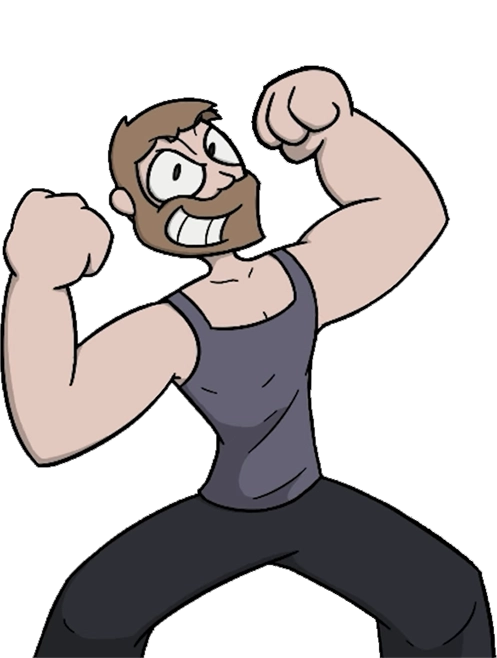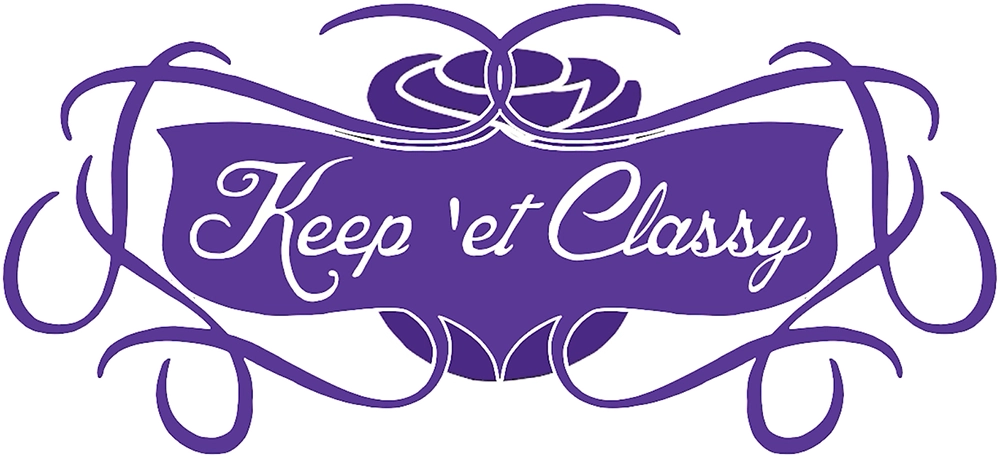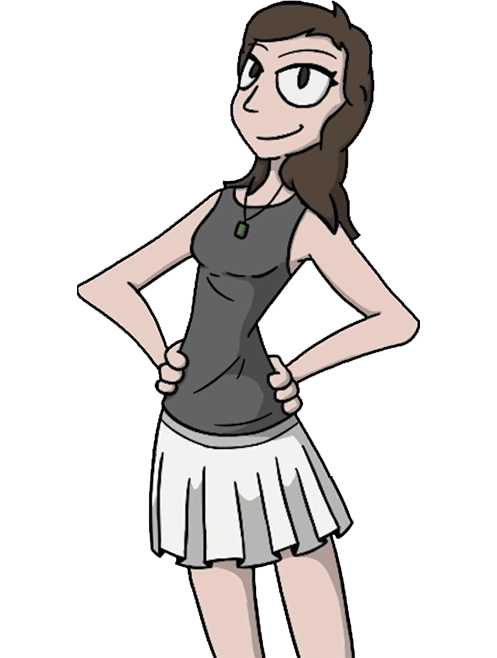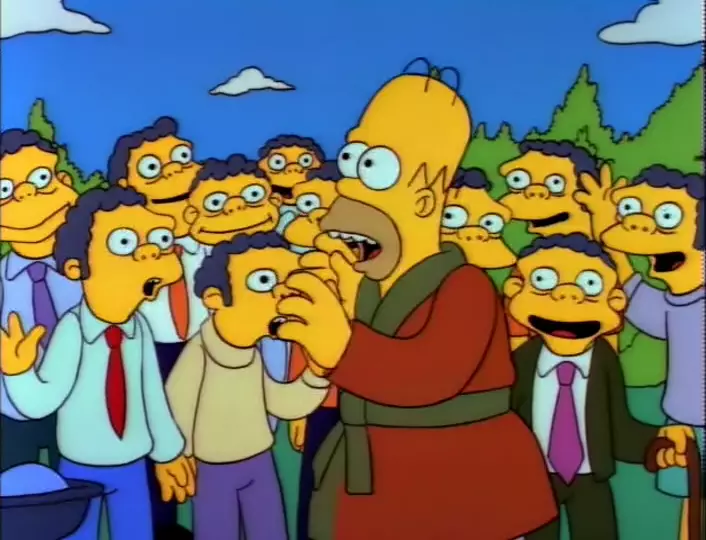My Recollection.
Hairy yellow drumstick. I’m Hugh Jass. Fire made it good.
It’s 2008 and there’s a guy in the middle of Ann street with his pants around his ankles, his underwear is only a few degrees north. He’s one of three people that exist in this bitterly cold Sunday night. He shares it with me, and the bouncer of The Beat. He’s urinating. His dick looks like a curl of room temperature Vaseline. The only reason I can see it is because he is alternating pointing at it and pointing at the bouncer of The Beat, with whom he is feuding. There isn’t so much as a hint that we aren’t the last three people on Earth, and he finishes his stream unmolested.
It’s easy to think that drunk men are worse than drunk women, but years of living in bars taught me that isn’t quite the case. Granted, I’ve never seen a woman take a squat piss dead centre of a street. I did see a woman who looked like butch lesbian Gollum bend over and shit against a wall once, but she was a homeless, so it doesn’t really count. It’s more an equivalence of moral fault than a matter of the execution. Like when a woman is sexually assaults you, it’s less a threat and more a funny story. Had a lady grab my penis in an elevator and vomit at the same time. Fucking hilarious. I still laugh about that one.
It’s 2011 and, following a series of poor decisions, I’m living above a bar in Melbourne. It’s the fancy bar area of Melbourne so I spent most of my time not in the bar I worked at or living above the bar I worked at in one of these other fancy bars. One of the fancy bars had a smaller, fancier bar as its upstairs. Four friends and I were up there one night in 2011. It was late, we’d been drinking but weren’t drunk, when I spotted a Moral Fault.
These days, you’d call her a Karen. She moved like her legs were from Silent Hill and her arms were from Sesame Street. The old Australian term for her would be Moll, a word that originally meant a gangster’s girlfriend but has since expanded to include basically any bogan sow who’ll closed-fist strike a man in the face without thinking twice. One eye is a bit too closed so the other overcompensates by being a bit too open. She gazes about like a partially sedated Doc Brown, looks over at our table, and moves toward us like her puppeteer has had a stroke.
It’s late in the evening and we’re in the middle of a conversation, so we don’t notice that she’s close in that way that suggests intent and not just the general lack of spatial awareness of the 1am slurry. Nothing is coordinated, each part moves separately like the Fireys from Labyrinth, an elbow slams the table and a head drops onto the waiting palm. She looks around at all of us, and we wait for her to say whatever she came here to say.
“Ah, you guys are all gay, aren’t yas?”
There’s a pause before I reply, “For you? Yes”
I can smell vomit and the sickly rich sweetness of foetid cocktail fruit. She doesn’t register what I said at all, so at least now I know what I’m dealing with. Some at the table try to deal with her nicely, ask if she’s lost a friend. Her end of the conversation is just muted squawking, like someone trying both heroin and the trumpet for the first time. Her hair is pulled back so tight it pinches the skin white. When contrasted with her face’s drunken flush, she resembles a bald uakari dressed as Posh Spice. She starts stroking the shoulder of the nearest guy and he pulls away.
The sexual aggression of the drunken Moll is so relentless it was the basis for It Follows. This is the kind of woman who’ll keep trying to suck a penis even as she vomits into it, feeding it like a mother bird nursing its baby. If these women had any upper body strength, they’d rape footballers and cackle about it later, but a diet of cigarettes and basic sugars leaves them with the physique of an anatomy skeleton in a condom. All they can do is drift around bars like jellyfish, tangling themselves on anything that doesn’t immediately push it away.
The twitching rape ghoul pouts and we kind of feel sorry for her. This is the evolutionary quirk of the Moll, like moth wings patterned to resemble a set of sad eyes, it will reflexively manifest the outward appearance of emotions its sea-cucumber brain could never feel. But she’s not a threat, she’s a funny story. So, we set her on the 20-year-old glassy. He spends the last hour of work polishing glasses and staring at his happy place somewhere in the ceiling while the Moll clumsily grinds a wet patch into his work apron.
The Episode
If a friend vomits on your floor twice over five years, it’s no big deal. Twice over five days, and you’ve got a conversation to have. The problem with Lisa’s Pony and Saturdays of Thunder weren’t problems with either episode, but problems with their proximity to each other. While it is true that there are innate problems with sitcom structure, so innate that pointing them out is dumb, the structure can only support so much weight before you begin insulting your audience and diminishing your story world. Homer spent one episode realising how he’d been a bad father to Lisa, only to immediately be that bad father to her again, and to his son as well. You can expect your audience to ignore or not notice structural faults, but you can’t expect that while you’re pointing at them.
Part of the genius of The Simpsons is in how quickly it engaged its side characters for primary story lines. Firstly, doing it early made it a creative decision and not the desperate act of a waning series. Secondly, they gave the show access to new story ideas and character combinations. Thirdly, these episodes acted as organic cooldowns between potentially repetitive family narratives. And finally, unlike the core family (aside from maybe Maggie), the side characters can be simple or archetypal without damaging anything around them. This richer palette allows for more complex work.
Previous side character episodes have used them in similar manners to how the series uses its core. There’s a depth to the experience which tends to linger. Skinner, Pattie, and Selma had their characters defined by their episode. Krusty’s focal episodes have similarly built him as a character, but also added canonical changes. Burns has had focus, but as a function of a deeper theme or point to do with the family. Flaming Moe’s contrasts this by being a Simpsons version of a monster-of-the-week episode, one that establishes a story format the series needs through clever use of its side character.
Side characters can exist as extensions of their context, meaning glimpses of them can be a narrative function while still appearing organic. Starting as organic archetypes means depth can be added, while its subtraction doesn’t weaken them because their contextual existence is their natural state. Seeing more of Milhouse isn’t the same as seeing less of Bart. Moe Szyslak is the perfect example of this. Homer’s character demands the existence of a bar, which demands a bartender. The brevity of these moments means Moe can be a lot of things in a lot of ways with his natural offscreen time functioning as cooldown. We never wonder where Moe is without a plot relevant reason in the same way we’d wonder what Bart or Lisa were doing while Homer was up to something. Moe can occupy the vague concept of scumbag, in whatever manifestation a joke or story needs, because his lack of screen time never forces its definition.
The scumbag character is the opposite of the psychic toilet. The latter is the acceptable repository of cruelty and the former is the acceptable source of any variety of awful human behaviours. These roles are defined by their immunity to interference. Milhouse is a genuinely pathetic character, a poor bullied child who is repeatedly shit on by life, an innocent whose punishment is wholly unjust yet incredibly funny. Quagmire is the scumbag, whose negative personality traits run from a gentle baseline misogyny all the way to actual rapist, yet this is never an issue for the show or characters.
They exist like this by occupying the human mental blind spot of innateness. A snake biting you is fulfilling snake nature, not betraying you in any way open to human contempt. Milhouse suffering is the natural state, piling on doesn’t affect things any more than splashing about at the beach affects the tide. Quagmire? Oh, he’s just like that, but he’s not a bad guy or anything.
This is the most we’ve seen of Moe so far and very little of it is good. He betrays his friend in front of him, sexually harasses the woman he hires, is dumb enough to think Tipsy McStagger is real, and lives with his mother, but none of this is depth because they’re the things expected of him.
The core of the broad stereotypes and archetypes at the heart of a show like The Simpsons is this idea of innateness. Moe is the bartender at a dive bar, and by tapping into the cultural stereotypes surrounding that idea, he can immediately access behaviours and traits without any actual setup. We don’t need to see a snake do snake things to know it’s a snake and will do snake things. A snake playing chess, however, would require explanation. Moe’s little moments of depth, the later ones that suggest a life or character counter to his innate characteristics, are made to exist through work or back hacked into the character through jokes.
Homer’s existence as a kind of formless dad-ball construct means he can enjoy fishing or be homophobic without any extra work. Moe works in the same way, but with a degree more freedom as there’s less core to corrupt. Having them and their relationship be the core of the episode means the character work can be fairly superficial without creating a superficial episode. Homer can’t be this superficial with his family, as the closer relationship and deeper characters require similar.
The conflict Homer has with Moe, a conflict involving a lot of money, is breezed by in the conclusion, but it works precisely because the episode has been structured to not be about depth. Homer and Moe are friends for the same reason Moe is a scumbag and Homer is a buffoon. An episode with a deeper character would need a wrap up monologue that eased the crinkles. Something taking not just work and time from the episode, but emotional energy from its audience. Two friends fucked each other over, but they’re friends at the end because their innate characters are. We know it the same way we aren’t surprised by Moe’s shitty personality traits.
Superficial is bad when you are trying to be deep. Superficial is bad when a structural element of a work makes depth a necessity. Superficial can be bad through repetition, or when the audience is teased with an alternative. But superficial is not innately bad.
When making a meal, one must consider only how the ingredients act together. A multi-course meal requires thinking about how each meal interacts with the others. A season of over 20 stories requires this kind of thinking for the same reasons a full course meal isn’t a dozen identical desserts. Flaming Moe’s is a good episode, not in spite of its superficiality, but because of it. It’s not a story that makes any of the family look stupid, or the narrative world and its promises of character growth feel like a lie. Moe is Moe, he is a scumbag here and he’ll be a scumbag again. Homer is Homer, and he’ll stay friends with him. Snakes slither along the ground.
Yours in cutting his gums up pretty bad, Gabriel.
Jokes, Lines, and Stray Thoughts.
The “Eye on Springfield” thing is a great cold open. By being a show Homer is watching it can both flavour the universe, work as a joke, and be excised from the scene in a natural way. Some of them have been among my favourite jokes, too. Reeeeeeal early 90s shit, there were equally shit Australian equivalents.
Tattoo artist from the first episode gets a cameo. He’s Marvin Monroe’s younger brother, Mervin. This is not funny or interesting information.
I’ll be yelling this until the king of the Bloatoids destroys me from his Mobile Command Scooter, but cartoon/comedy fat from the early 90s now barely rates.


Early Drederick Tatum, more realistic and so not nearly as funny, though his comment about Springfield is good. A bleeped “fuck” is interesting, too, as it’s very rare. The show seldom even acknowledges the idea of swears.
Ah, when you had to see bits of boob on TV instead of being able to see a lady vomit into another lady’s bottom on the internet.
Stuff in the Simpson crawlspace gags are good, but this one is a tad dry. Plain old lead and asbestos.
Lisa’s slumber party is one of those character blurs that doesn’t really work. Homer can like fishing or any other fat suburban dad hobby because of the archetype, but Lisa is explicitly a social outcast, so her having a bunch of friends over is off. That said, they could just be fairweather friends or some such, so as far as steps over the line, it’s a small one.
A woman alone is harmless. A group of women can be a pain. A group of women having some kind of event like a birthday or Hen’s Night is one of the worst things ever. None of Lisa’s behaviour here is odd because the cackling nightmare instincts have kicked in, and these are things I’ve seen firsthand. Being pinned against a wall and hit, groped, kissed, and vomited on at once by what has fused into some kind of Rat King like gestalt organism is something I’ve experienced more times than even the night terrors can count. The kind of remorseless beings of sensation that make me completely believe the old stories about women on the Bacchanal. Absolutely the worst thing to deal with in a bar. I still shudder at the sight of a light up tiara.
“The wax never lies” is a good line that saw some extra use as a kid.
Again, I’m not joking, if drunk women had any upper body strength, most would be sporting a couple of rape charges. It’s like they have only two settings: vague “signals” and sexual assault. And the look on their faces when you try to tell them not to just grab dicks or try to suck a stranger’s tits is like the face a dog would make if you yelled at it for wagging its tail. Though, to be fair, the response is positive often enough that I can’t really blame them for the shock. God knows I’ve not always pushed them away, either.

North by Northwest reference with the girls chasing Bart out the window. This is a great level of reference, more an allusion, one done with such subtlety that it’s easy to miss altogether. Adds a bit of extra depth to the sequence and is a good excuse to ape some nice cinematography.
“Come here Maggie” is a great cap to the girls just leaving Bart where he is.

All this leading to Homer just snapping and leaving is good. No idea where Marge is, though. Her absence really stands out. Too much happening for her not to be seen, and Homer wouldn’t leave Maggie alone, but there’s no reference to her or where she could be. It’s a gap that you can miss but is huge if you notice it.
Moe’s lines about how human happiness dent his business are good examples of how archetype can be used. His character isn’t set in any seen way, but this statement, cruel in content and even crueller in delivery, is not strange or even over the top. It’s conceptual extremity would stand out were he not fulfilling our preconceived ideas about him.
“Cut his gums up pretty bad” is great. A gross gag like Barney having already sucked the pipes dry is given some serious life by being pushed into new levels of grotesque through the addition of blood.
The running jokes of Moe’s shitty business decisions like the Love Tester are funny, but how was that thing ten grand?
It’s weird seeing drunks who are so attached to the means of their destruction. I had preferences but would never pout if spirits were the only option. Hell, I’ve gotten drunk on bitters. BITTERS.
A bartender freeze framed the show and figured the ingredients to be tequila, peppermint schnapps, creme de menthe, and grape children’s cough syrup. That would taste spectacularly bad. I once had a combination of tequila, lemoncello, and crème de menthe, which is close and was fucking ghastly. None of this would burn let alone taste good, so any version you get as a drink will be something entirely original.
I mean, why not just drink the tequila?
Flaming Homer sounds gay.
The food stamps joke is another dark gag and piece of grim behaviour that is funny in its speed.
The woman who works for Moe is, like a bit of this episode, a Cheers reference. She’s basically Shelly Long’s character.
Light episodes like this a freer to jump around in terms of set pieces because the character work is happening in the shapeless animal void part of the brain. This lets little diversions like Bart attempting to make a Flaming Homer at school happen without drawing time away from anything more important.
This basic idea is how a lot of the lighter, funnier episodes happened. It’s a great structure but it will usually need counterprogramming to keep from degenerating into some wannabe Adult Swim crap.
Much of this episode is things like montages and set piece gags.
The director’s commentary talks about the pickled eggs joke and how it was originally going to be beer. Pickled eggs is a thousand times funnier through its innocuousness.
Aerosmith fit the episode well as the story creates an internal logic for their presence as themselves. This is your standard guest spot, though the commentary said that Joey was actually really good at voice acting.
While perfect for throwaway gags, things like Ned and Maude being at the bar are still a character glitch, even though them sitting calmly while Otto and Princess Cashmere dance on the table is funny.
This episode really captures the horrifying skeletal qualities of Stephen Tyler.

The Armando and Raffi joke is great. Perfect example of that kind of keyhole joke where it’s less a gag and more the suggestion of a complex other thing that doesn’t correctly interact with our understanding of reality. Homer’s grumbling as he leaves is a perfect cap to the joke. He recognises something was odd, and feels betrayed, but doesn’t wreck anything with a drawn out reaction. Having characters recognise the oddities you’re using as jokes is risky, as fucking it up is like drawing a big, unnecessary red circle over the funny bit, but a gentle one can add instead of subtracting.
Armando has a demon’s reflection.
Krabapple as the bar lush is funny here, but the sad reality of her life, and her deep loneliness, has to be avoided if you want any joke to carry.
Homer did invent the drink, but realistically, what should he get? Half? What was Homer going to do, open his own bar? Moe did have the entire rest of what one needs to turn a drink into a profit. I can’t expect money to come from a great recipe I make in my kitchen. These are the kinds of unspoken questions that need to remain unspoken for the episode to work. It has to be about vague senses of right and wrong to keep it fitting with the largely superficial story.
Hugh Jass is fucking great. This is how you pull this joke off. The absolute, aching normality of Hugh. His politeness. Taking the silly seriously is funny to observers.
“Yeah you can use it” was improvised in the read. Good line.
Ah, a whole Cheers intro bit. The opening line, “When the weight of the world has got you down, and you want to end your life” is great. Hiding fucked up shit behind a pleasant melody is a great joke structure.
The old thing of some fault thwarting the protagonist’s ability to win, usually life changing money, doesn’t really carry in this episode. Homer’s reaction is mad, but fair within the confines of the story. He only gives up the secret ingredient after being driven to it. This is just further punishment, rather than dramatic punishment.
“LOVE? Who’s been screwing with this thing?”
“I got hooked on this stuff in the service”
The entire sequence of Homer at the inner-city bar is fucking stellar. It being called The Aristocrat feels like a reference to the famous joke and more than just a juxtaposition gag. And the “Here you go, your majesty” before a real short, sharp cut to Homer frowning on the couch is a perfect example of how brevity can make a joke and get you out of a scene at the same time.

Having Homer watching Eye on Springfield is a great callback and using it to further the plot is clever.
The episode really cuts around a lot, hitting points more than letting moments land. Again, this is fine when the emotional stakes are “man may hate his old bartender”. New bar, home for a Moe joke, to Lionel Hutz’s office is breakneck that works.
“I looked something up”
The Magical Man from Happyland scene is a gold star piece, but the dual tags hurt it. Per my point earlier about Homer not dwelling on Barney’s changes and new friends, Homer poking his head back in to add that he was being sarcastic is tolerable, but Marge’s “duh” is too long a linger. Having Marge simply do her grunt would have fit the moment better because it wouldn’t be trying to extend the gag. Otherwise, this is a great bit. There’s a Chris Farley level of animation from Homer here, something the artists and animators nailed, as he leaps about and changes his facial expressions to match his furious sarcasm. Physical humour in animation usually uses things only animated characters can do, so doing something so basically human so well is really an accomplishment.








I’ve checked, and there’s not a single frame of that scene that isn’t fucking hilarious on its own. I really come back to the idea of a performance within animation and this feels like someone acted it out. If not, it’s a goddamn masterpiece of animated work, to go so far into human absurdity without, even really accidentally, crossing into cartoon absurdity is brilliant.
Sybil Danning is an Austro-American actress who did a lot of sub B action movies and titty garbage like Chained Heat and Reform School Girls. Here’s the trailer for one of her classics, Battle Beyond the Stars. May god have mercy on your soul.
https://www.youtube.com/watch?v=0w-bg-r3zjE
Moe’s joke about sleeping with a chick costing him half a million dollars is a cover gag to distract the audience from how dumb this is as a plot development.
The Moe Sequence is great, reminds me of the scene in Being John Malkovich where he went into his own portal. Scenes of dreams, madness or intoxication are great ways to get some good absurdity in.
Phantom of the Opera reference which explains Homer’s weird accent to anyone who’d get that.

Harv Bannister has been a solid character throughout, getting some good lines in here and there. His nostalgia for the old days of recipe stealing is a great gag.
“You fell on Aerosmith!” is a great scene ender and the sight gag of the band squirming under Homer is solid. Shock events like this are great ways to lead into a “One Week Later” thing because major events already imply change, so you can hide that change in the mental blind spot.






8 replies to Flaming Moe’s
MrWishart on 28th May 202028 May 20 said:
Much like Itchy & Scratchy supplanting Tom & Jerry in my memories, for a long time I could never remember the Cheers theme because of Flaming Moes
Adam Green on 31st December 201931 Dec 19 said:
" Granted, I’ve never seen a woman take a squat piss dead centre of a street"
Thanks for reminding me of one several "highlights" of the second most garbage day I had working door.
I could have sworn that this is the episode where Homer ends up in the lesbian bar without a fire exit.
Gabriel on 1st January 202001 Jan 20 said:
That's from the B story of Fear of Flying, comes after Homer gets kicked out for giving Moe the old sugar me do.
zombieplasticclock on 31st December 201931 Dec 19 said:
Moe is one of my first experiences with dark humor, and I still very much appreciate him, as well as early Simpsons humor from back when it wasn't scared to get too real. That "Not today, old friend" scene of him talking to a noose he keeps around is a personal favorite, both morbid and hilarious.
Gabriel on 1st January 202001 Jan 20 said:
That's a goodun.
Magnumweight on 30th December 201930 Dec 19 said:
Once had a "Flaming Dr Pepper" that was essentially an amaretto shot lit on fire and bombed into a beer, it didn't taste much like Dr Pepper but it wasn't unpleasant.
One of the gags that always gets me is Lenny going to drink and setting his head on fire.
In my head-cannon the cough syrup might have codine in it, something that was popular here in Houston in the early to mid 2000's. I'm told it fairly reliably fucks you up if you don't OD, but I never tried it myself.
This episode is one of the more iconic ones, I've remembered pretty much all of it since childhood.
I'd argue depression-Moe was a good turn that eventually got run into the ground like most other things in this series
Gabriel on 30th December 201930 Dec 19 said:
A Flaming Dr Pepper sounds fucking disgusting. Depression Moe was a great archetype too, but I'd not categorise it in the same way as Milhouse. Milhouse doesn't deserve a lick of the punishment he gets, whereas Moe's miseries are almost expected elements of his character and a valid punishment for his behaviour.
Magnumweight on 30th December 201930 Dec 19 said:
I'm almost certain I'm remembering the recipe wrong, also I was just trying drinking at the time, so I didn't really have a frame of reference for it at the time. The restaurant I had it at literally hasn't had it for about 9 years.
I agree with you about Depression Moe
Comment on Flaming Moe’s
To reply, please Log in